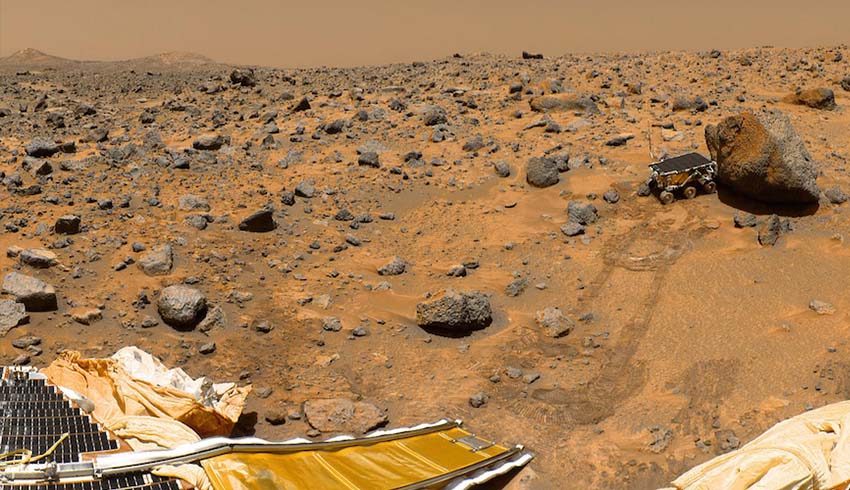Just such a mission has been planned for some time, with the plans, which will involve NASA and the European Space Agency, further refined at a conference in the US last week.
This would be done robotically and would long precede any crewed mission to Mars.
NASA announced its concept for a no-frills Mars sample return mission in 2017, and last year signed a statement of intent with ESA.
That envisages NASA providing a Mars lander mission using a European-built rover, which would take samples collected by the Mars 2020 rover mission then place them into a small rocket that would launch them into Mars orbit.
An orbiter built by ESA, would collect the sample container and bring it back to Earth.
That would involve two launches in 2026, with return to Earth in 2031.
And that remains the plan, said NASA Mars Exploration Program director Jim Watzin in a presentation to the meeting of the Mars Exploration Program Analysis Group (MEPAG) in California.
“We want to pull this plan together and present it to the decision authorities for a decision by the end of the 2019 time frame,” he said, according to a report on SpaceNews.
The two 2026 launches would be the NASA lander followed by the ESA orbiter. The lander would take about two years to reach Mars, the orbiter about a year.
On that schedule, the lander will touch down near the Mars 2020 site in 2028 and deploy its rover to collect samples. Mostly these are in tubes left on the ground by the Mars 2020 rover.
If it is still functioning, the Mars 2020 rover may be able to deliver some samples directly to the lander if anything goes wrong with the fetch rover.
The lander rocket will then place the sample container into orbit for collection by the Earth entry vehicle. If all goes to plan, that will re-enter Earth atmosphere and touch down in Utah in 2031.
Neither NASA nor ESA have formally approved this mission. However, NASA has approved development of a budget for its contribution.
This month, ESA released an industry invitation to tender seeking proposals for the orbiter. ESA members will consider funding at the ministerial meeting in November.

